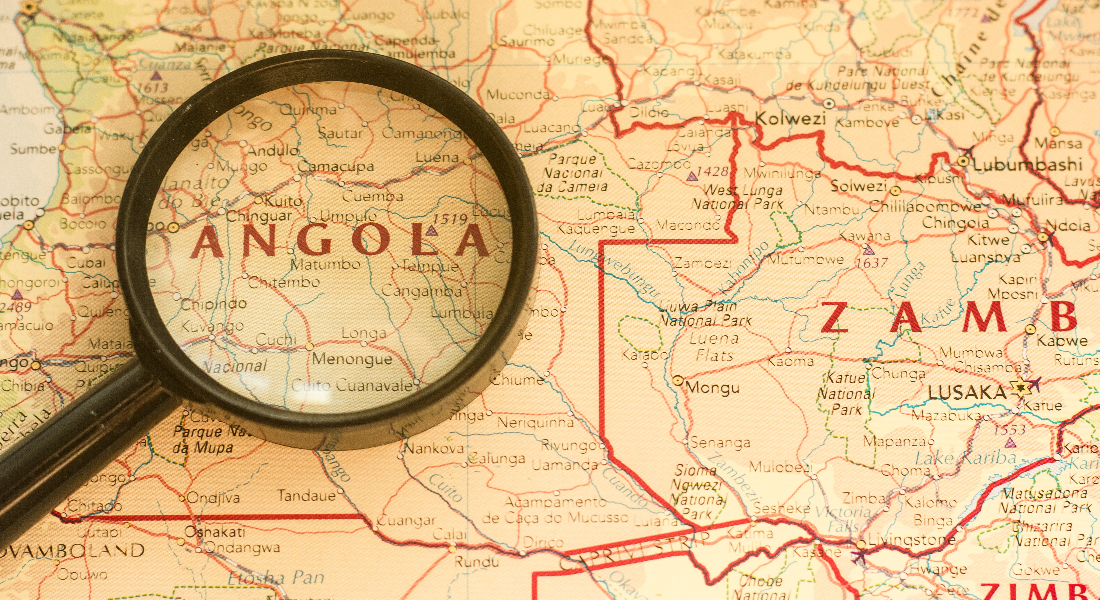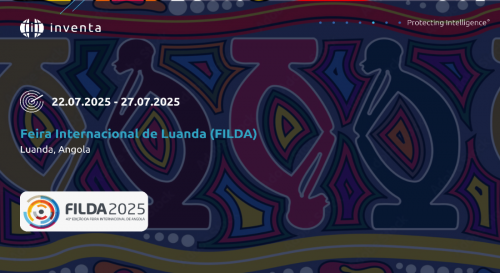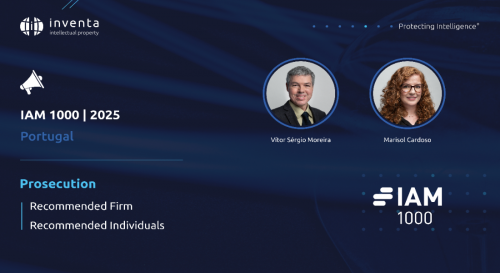
Substantive Examination of Patent Applications According to The Angolan Patent Law
Introduction
This study aims to provide an approach of the topics followed by a patent examiner when a patent application is processed by a Patent Office during the substantive examination phase, in the context of the Angolan Patent Law (APL). As a matter of comparison, the same topics are evaluated according to the European Patent Convention (EPC), wherein we focus on the main differences between the two legal frameworks.
Angola is a Member State of the World Intellectual Property Organization (WIPO) since 1985, a member of the Paris Union for the Protection of Industrial Property since 2007, and a member of the Patent Cooperation Treaty (PCT) since 2007. Moreover, Angola is a member of the World Trade Organization, and consequently of the Agreement On Trade-Related Aspects Of Intellectual Property Rights(TRIPS) since 1996.
Angola establishes the provisions regarding the protection of Industrial Property by means of the Industrial Property Law of February 28, 1992. On the other hand, the European Patent Convention (EPC) is in its 16th edition, which is in force since July 1st, 2020.
Substantive Examination Steps
Identifying the invention
A patent examiner usually starts his work during a substantive examination by studying the claims, in order to identify what subject matter is effectively claimed by the applicant. The EPC explicitly defines a very common principle in its Article 84, wherein “The claims shall define the matter for which protection is sought. They shall be clear and concise and be supported by the description”. The APL is silent about this relevant legal matter, and regarding the requisite of “clarity”, the only point that a patent examiner in Angola could raise would be based on Article 5 (f) of APL, in accordance with which it is necessary to file “a clear and comprehensive description of the subject of the invention such that it may be carried out by a person having ordinary skill in the art”, although this would not be a proper approach because Article 5 (f) of APL is clearly restricted to the description. Therefore, APL comprises a gap regarding clarity of claims, which may limit the power of action of a patent examiner to raise objections regarding broad, ambiguous and unclear claims.
Exceptions to patentability
The next step followed by a patent examiner refers to the identification of subject matter which is excluded from the patentability. Regarding this topic, APL and EPC have several relevant differences, which may lead to very different conclusions by a patent examiner.
APL and EPC share a common exception to patentability when the commercial exploitation of inventions would be contrary to the "ordre public" or morality, although EPC inserts a disclaim in its Article 53 (a), stating that “exploitation shall not be deemed to be so contrary merely because it is prohibited by law or regulation in some or all of the Contracting States”.
The APL defines in its Article 4(d) a specific subject matter, which is typically protected in several jurisdictions, but it is an exception to patentability in Angola, namely, “food and chemical-pharmaceutical products and medicines intended for human or animal consumption”. On the other hand, the apparatus or processes employed in their manufacture are patentable.
Despite of forbidding the granting of patents claiming pharmaceutical products and medicines, APL does not provide rules referred to “methods for treatment of the human or animal body by surgery or therapy and diagnostic methods practised on the human or animal body”, which are excluded from patentability according to Article 53 ( c) of EPC. Therefore, it is possible that a claim drafted as “method of treatment of the disease Z by a substance or composition X” would be literally acceptable by the APL. In the same way, a swiss-type claim ("Use of a substance or composition X for the manufacture of a medicament for therapeutic application Z"), which is no longer accepted by the European Patent Office (EPO), could be accepted according to a literal interpretation of the APL.
Therefore, if the APL seeks to maintain the pharmaceutical products and medicines off the grid of patentability, its current wording is not updated, letting several gaps open, regarding the method and use claims, wherein we shall bear in mind that the number of patent applications referred to new uses of known products is nowadays a relevant share of the pharmaceutical patent applications.
Regarding the evaluation of exceptions to patentability, an examination of a patent application in the pharmaceutical technical field, according to the APL and the EPC, would probably result in quite different outcomes. Moreover, as previously mentioned, IAPI does not maintain in the internet a public database, wherein the patent applications filed in Angola could be consulted. Therefore, the gaps in the substantive examinations procedures regarding this critical technical field may result in several uncertainties for the public, including the patent applicants, due to the lack of easily accessible public information.
Prior Art Searches
The patent examiner shall primarily identify prior art documents published before the date that limits the state of art, namely the filing date of the patent application or, where applicable, the priority date, in order to further evaluate if the invention meets the patentability criteria of novelty and inventive step.
Considering the previously published documents, the APL defines a grace period in number 4 of its Article 3, wherein publications committed by the applicant within the six months preceding the filing date or, where applicable, the priority date of the patent application shall not be taken into consideration for objections related to lack of novelty. The EPC has similar provisions in its Article 55, but the previous publication by the applicant must have happened “at an official, or officially recognised, international exhibition falling within the terms of the Convention on international exhibitions signed at Paris on 22 November 1928 and last revised on 30 November 1972”.
The easier conditions of the grace period established by the APL are positive, when we take into consideration the unfamiliarity of the Angolan public with the patent system. Therefore, some patent applications of residents may meet the novelty requirement according to the APL, even if the inventions were published earlier.
Besides identifying the prior art documents published before the date that limits the state of art, a patent examiner, following the EPC provisions, must consider Article 54 (3), which states that the content of European patent applications as filed, which have dates of filing prior to the date that limits the state of the art of the application under examination, and which were published on or after that date, shall be considered as comprised in the state of the art (“P documents”).
The objectives of the EPC Article 54 (3) are related to avoiding a plurality of granted patents for the very same claimed invention and, of course, safeguard the first applicant to have the exclusive rights in the Member States of the European Patent Office.
On the other hand, the APL does not contain any provision regarding specific identification of “P documents”. Moreover, the PCT procedures guide a patent examiner to identify in the international search report, documents filed before the date that limits the state of art, but published later, although said documents are normally not used for the further examination during the international phase, but they might become pertinent at a later national stage. So, a patent examiner in Angola receives this information from the PCT, but the APL does not rule this topic, resulting is an increased level of uncertainty regarding this matter.
Conclusions
The APL may be out of date in terms of some legal aspects pertinent to the substantive examination of patent applications. As a matter of example, the APL seeks to limit the granting of patent applications related to pharmaceutical products and medicines, but let some ways of uncertainty for therapeutic methods and use claims. Regarding the identification of the state of art documents, which are used for assessing if an invention is novel and inventive, the APL does not rule the relevant issue of “P documents”, which may result in a plurality of patents granted referred to the very same invention for different owners. Alternatively, this gap also may be used in favour of the applicant, which may file several patent applications in Angola regarding the same invention and obtaining several patents, wherein the exclusive right to exploit said invention could be extended for several months.
Therefore, there are some opportunities for updating the Angolan patent system, including publishing guidelines for examination and creating internet databases, which would allow the public to easily check the filed patent applications and their status.
This article was originally published in The Patent Lawyer Magazine (March / April 2021).
Lista de Territórios
Não existem resultados para a sua pesquisa.
- África
- África do Sul
- Angola
- Argélia
- Benin
- Botsuana
- Burkina Faso
- Burundi
- Cabo Verde
- Camarões
- Chade
- Comores
- Costa do Marfim
- Djibuti
- Egito
- Eritreia
- Eswatini (Suazilândia)
- Etiópia
- Gabão
- Gâmbia
- Gana
- Guiné
- Guiné-Bissau
- Guiné-Equatorial
- Lesoto
- Libéria
- Libia
- Madagáscar
- Maiote
- Malaui
- Máli
- Marrocos
- Maurícias
- Mauritânia
- Moçambique
- Namíbia
- Níger
- Nigéria
- Quénia
- República Centro-Africana
- República Democrática do Congo
- República do Congo
- Reunião
- Ruanda
- Saara Ocidental
- São Tomé e Principe
- Seicheles
- Senegal
- Serra Leoa
- Somália
- Sudão
- Sudão do Sul
- Tanzânia
- Togo
- Tunísia
- Uganda
- Zâmbia
- Zanzibar
- Zimbábue
- África (OAPI)
- África (ARIPO)
- Mais Territórios
- Macau
- Maldivas
- Portugal
- Timor Leste
- Marca da União Europeia (EUIPO)
- Marca Internacional (Sistema de Madrid)
- Patente Europeia (IEP)
- Tratado de Cooperação em matéria de Patentes (PCT)




